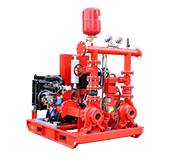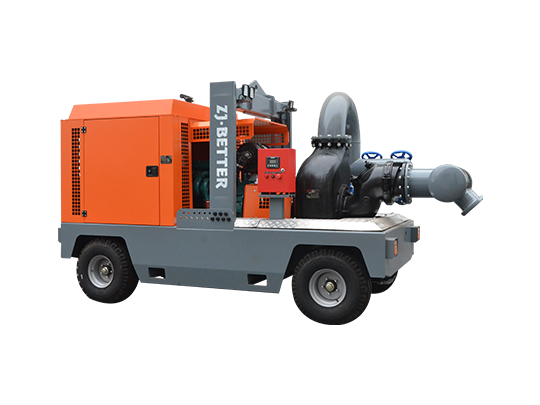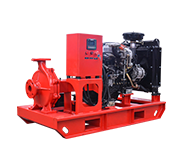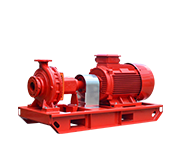During the actual operation of a fire pump, proper ventilation is crucial to ensure the pump and its surrounding area remain cool and that the engine or motor powering the pump receives an adequate air supply. Adequate ventilation helps maintain the pump's performance, prevent overheating, and ensure the pump can deliver the necessary flow and pressure for firefighting. Here's how fire pump ventilation is typically managed during operation:
-
Natural Ventilation: Many fire pump installations rely on natural ventilation. This means that the pump room or enclosure is designed with openings, vents, louvers, or openings in walls or roofs to allow the free flow of air. These openings are strategically located to ensure that fresh air can enter while warm or hot air is expelled.
-
Ventilation Fans: In some cases, especially in larger pump rooms or when natural ventilation is insufficient, ventilation fans may be installed. These fans help create airflow within the pump room, ensuring that a continuous supply of fresh air is provided. Exhaust fans expel hot air, while intake fans bring in cooler air.
-
Cooling Systems: Fire pumps generate heat during operation, and in high-demand situations, this heat can increase significantly. To maintain safe operating temperatures, some installations may incorporate cooling systems, such as air conditioning or cooling fans. These systems help control the temperature and ensure that the pump and motor don't overheat.
-
Proper Enclosure Design: The design of the pump room or enclosure should consider airflow patterns and heat dissipation. Adequate space around the pump, motor, and other components is essential to facilitate proper ventilation.
-
Regular Maintenance: Ensuring that ventilation components like fans, louvers, and exhaust systems are clean and free from obstructions is crucial. Regular maintenance and cleaning help maintain proper airflow.
-
Monitoring and Alarms: In some installations, monitoring systems and alarms may be used to detect temperature variations or inadequate ventilation. If the temperature exceeds safe levels or if there's a lack of airflow, these systems can trigger alarms and alert personnel for immediate action.
-
Emergency Ventilation: Fire pump rooms may also have emergency ventilation systems designed to activate in case of a fire. These systems can help remove smoke and heat in emergency situations, allowing firefighters to access the pump room safely.
-
Compliance with Codes and Standards: It's essential to design and maintain fire pump ventilation systems in compliance with local building codes and industry standards, such as those provided by the National Fire Protection Association (NFPA) and other relevant regulatory bodies.
Proper ventilation of a fire pump is critical for its reliable operation and safety. The specific ventilation requirements will depend on factors like the size and capacity of the fire pump, the type of power source (electric or diesel), and the environmental conditions of the installation site. Consulting with fire protection engineers and ensuring compliance with relevant regulations and standards is essential to ensure the adequate ventilation of fire pump systems.
.jpg)






